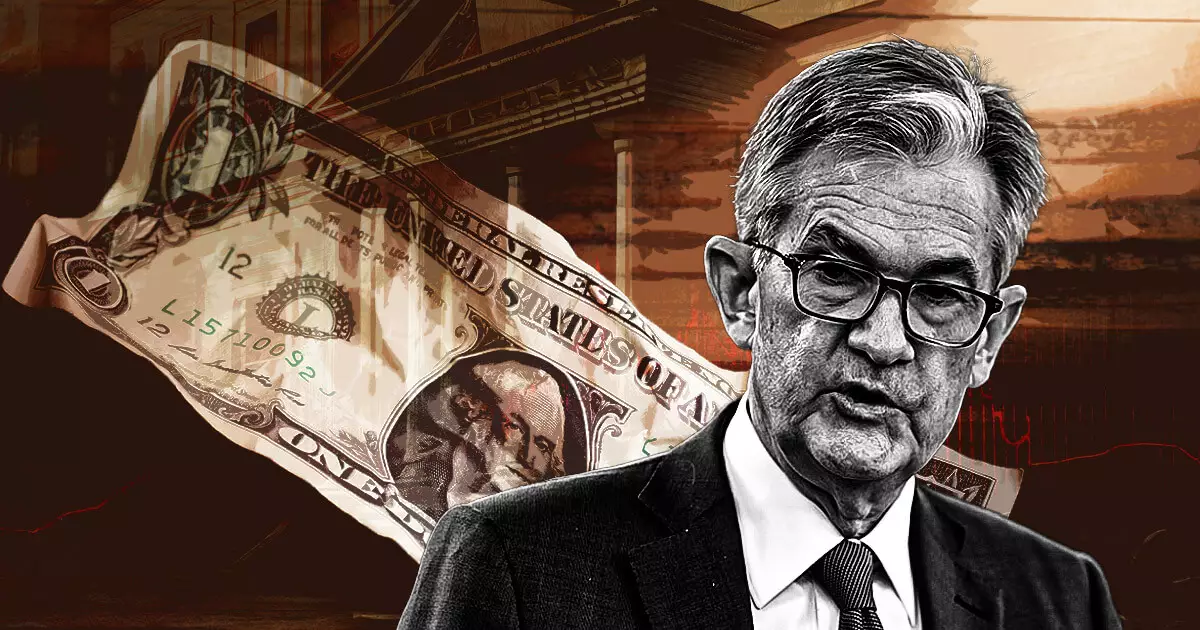In a recent address to The Economic Club of Chicago, Federal Reserve Chair Jerome Powell highlighted the urgent need for a robust regulatory framework for stablecoins. This is not just another bureaucratic requirement; it marks a pivotal shift in the way policymakers are beginning to recognize the significance of digital financial instruments. While previous attempts to create a legislative environment for stablecoins have faltered, Powell signaled optimism that lawmakers are now re-engaging with the topic. The growing relevance of stablecoins in everyday transactions can’t be dismissed—last year’s staggering $14 trillion transfer volume indicates that these digital currencies are beginning to rival traditional financial mechanisms like Visa. This begs the question: if we hope to keep pace with innovation, why didn’t we initiate this framework earlier?
Consumer Protection at the Forefront
As Powell discussed the framework’s necessity, he placed a strong emphasis on consumer protections and transparency. In an era where scams and fraud are rampant, especially in the crypto space, creating a legal structure that safeguards users is paramount. By ensuring that stablecoins operate under a clear set of rules, consumers can confidently navigate this evolving landscape without the lurking shadows of uncertainty. This proactive approach showcases how government input can bolster trust in digital products, enabling wider adoption.
Moreover, by highlighting consumer safety, Powell deftly deflects potential criticisms from skeptics who argue that regulation stifles innovation. Contrary to that narrative, he illuminates a path where smart regulation can drive progress while reassuring users that their interests are being considered. This suggests that Powell is not just a bureaucrat, but rather a visionary looking to harmonize innovation with safety—a balance that is sorely needed.
Encouraging Banking-Innovation Partnerships
One of Powell’s most significant assertions was that the Fed does not aim to shut banks out of the crypto sector. This pragmatic stance opens the door for collaboration between traditional financial institutions and crypto-related businesses. However, it also reveals a glaring truth: the banking industry needs to catch up with the rapid advancements in the technology sector. By relaxing certain regulatory constraints, Powell has begun to create an environment where both sectors can thrive together.
Banks have long been cautious about venturing into digital assets, and Powell’s acknowledgment of the conservative approach taken by US bank regulators speaks volumes. While the importance of following the rules is undeniable, it’s refreshing to see the Fed considering a more lenient stance, as long as consumer protections remain core to any adjustments. Innovation does not have to come at the cost of safety; this emerging regulatory philosophy can pave the way for a more integrated financial future.
The Regulatory Landscape: A Complex Path Ahead
Despite Powell’s encouraging words, the complexity surrounding the integration of digital assets into traditional finance cannot be understated. The financial world has already witnessed the complications that arise when unregulated growth outpaces established frameworks—think of the 2008 financial crisis. Powell’s recognition of the existing regulatory complexity raises awareness that solutions are not simply a matter of casual legislation. The interplay between evolving technology and static regulations is rife with challenges, and it demands thoughtful, multifaceted responses.
As Congress revisits legislative proposals like the GENIUS Act and the STABLE Act, it’s crucial that a comprehensive approach be taken. Each bill should aim not just to establish rules but to foster an environment where innovation can coexist with consumer protection. This is not a trivial balancing act; it’s the cornerstone of a sustainable financial future.
A Vision for a Digital Financial Future
In essence, Powell’s remarks are more than just a bureaucratic nod toward stablecoins; they represent a newfound readiness among US financial authorities to engage proactively with the digital asset world. By advocating for a transparent and effective regulatory framework, Powell seems to acknowledge that the future of finance is not just digital, but also collaborative. And if this regulatory climate can embody forward-thinking principles, the potential for innovation can flourish.
Indeed, Powell’s vision hints at an era of banking that embraces both consumers and innovation, paving the way for an integrated financial ecosystem that thrives on technological advancements. It’s a sentiment that resonates well beyond mere rhetoric; it’s an invitation for stakeholders across the spectrum to contribute to and engage in a more promising financial future. A future where smart regulations do not restrict, but instead propel us toward what’s next.

